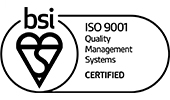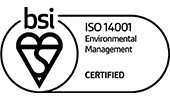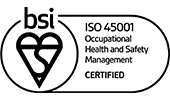A blog from Steelcase – Leadership by Design.
Hybrid work has gone mainstream; and it’s one of the biggest economic and cultural changes facing leaders today
Most businesses who choose hybrid work are trying to offer a balance between the flexibility people want, and the need to bring employees together to create greater cohesion and build a sense of community.
Hybrid work policies can be a struggle for companies when people come into offices that still look like ghost towns. There’s a critical mass that’s needed to gain momentum and leaders play a critical role – they need to be accessible in ways they may not have considered in the past and to set the tone for the adoption of hybrid work.
The current office, however, might be a barrier to leaders who want to be accessible and role models for hybrid. Workplace design traditionally focused on leaders’ needs by creating executive spaces that were set apart from the rest of the company. It became a constraint to building transparency and made it harder for leaders to have connections with employees.
A fundamentally different approach to leadership spaces can be an important tool for building the kind of culture and fostering the kind of behaviours leaders want to see.
Accessible. Approachable. Functional.
One of the things we know from research is that employees want their leaders to be visible, accessible and transparent in how they run the business. For many leaders this requires new behaviours and practices, which can be a challenge because they also need to get their jobs done.
How can leaders balance the need to be more approachable to employees? How can they collaborate as a leadership team and share quickly with each other as well as the larger company? And how do they do all this in a hybrid work environment when they need to interact with people in the office and remotely?
Space can shape new leadership behaviours

Bringing people back together recharged and reinvigorated is perhaps the greatest challenge leaders have today, regardless of what their hybrid work strategy may be. There’s never been a greater time for leaders to lead by example and demonstrate the culture and behaviour they expect from their employees, which will require a new approach to leadership spaces.
“We know organisations need to rebuild the social capital that was lost while everyone worked from home,” says Cherie Johnson, Global Design Director at Steelcase. “Traditional leadership spaces don’t offer the transparency and accessibility people want today.”
The design concept of creating spaces that are more like a vibrant neighbourhood is based on the belief that the workplace needs to be more inclusive and create the sense of community that people and companies need to thrive. Neighbourhoods are a tangible way for businesses to communicate their values and shift their culture.
Read our recent blog with Steelcase on creating a neighbourhood in the workplace.
Leaders need a highly adaptable and resilient space that can flow with their needs. The easier it is for them to make changes on demand, the more effective the space will be. Leaders will need to be able to find the level of privacy they require – the ability to focus in the office has become even more important.
To create a leadership neighbourhood, businesses need to include a diverse range of owned and shared spaces that meet the various needs of hybrid work. If you’d like to find out how we can help you, get in touch!
Steelcase Research and Insights: new workplace research, insights and inspiration about work, workers and the places where work happens: www.steelcase.com/research








